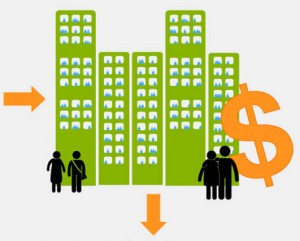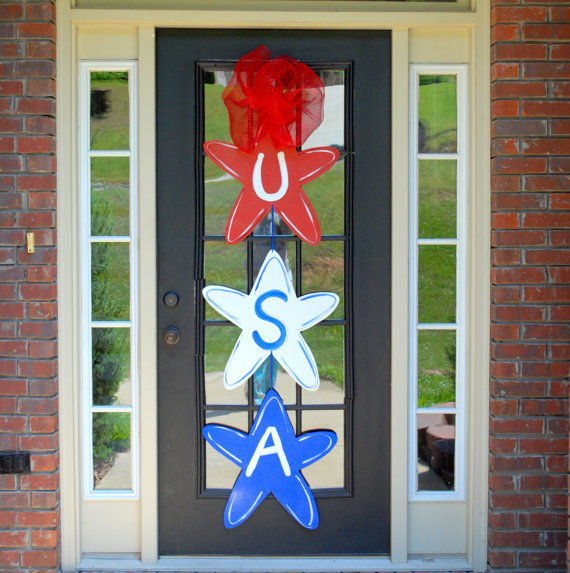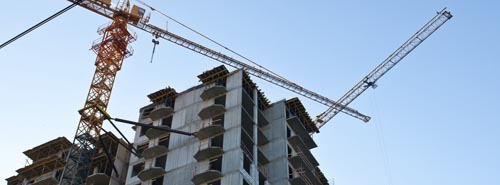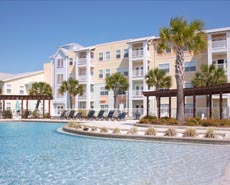The pace of continued economic recovery will determine whether the number of U.S. renter households will grow by 1 million or closer to 1.7 million between now and 2015. That’s the consensus of a recently released report from Freddie Mac’s Multifamily Research department, which also notes that there has been major growth in the single family home rental market. The number of 1-4 unit buildings rented has grown by 3 million – a 16 percent increase – since 2007. The report casts a rosy glow over the future for multifamily, which has been enjoying low vacancy rates and rising rental incomes in most markets for the last couple of years. Economic uncertainty plays a major role in determining whether Americans will rent or buy homes, and the overall state of the economy is stated to be the primary factor in determining the level of continued multifamily growth, according to the Freddie Mac analysts. Three possible scenarios, depending on the pace of the recovery, are: -The economy will recover at a quicker than expected pace, meaning that rental demand will be tempered by home buying. Up to 1 million renters could join the market between now and 2015. -The economy will continue its current slow recovery, resulting in a drop in the homeownership rate (between 1-2 percent) and continued growth in the number of renter households – up to 1.7 new renters between now and 2015. -The economic recovery will stall, causing more uncertainty for potential homebuyers and leading also to increased and ongoing renting – up to 1.6 million new renters between now and 2015. See the chart below with forecast factors for unemployment, foreclosure, multifamily supply and home price growth given the three scenarios. It’s worth noting that certain urban multifamily markets, the so-called “Sexy Six” that buoyed the multifamily recovery, have been the most dramatic winners in the recent recovery. New York, Boston, Washington, D.C., the Bay Area, Southern California, and Seattle have enjoyed strong consumer demand for properties. As you look at the next three years for multifamily, what are your personal prognostications? Are there any regional markets that are poised to expand the ranks of the Sexy...
Lofts at Perimeter Center...
Behind the Lens
The evening of the photo shoot could not have been more perfect if it were Photoshopped: bright blue skies, golden sun, and a crisp breeze signaled the official arrival of autumn in southeast. The photography team easily made our way to The Lofts at Perimeter Center, a Worthing Company property conveniently located at the junction between I-285 and GA 400. The Lofts rest just moments from the buzzing shopping malls and fine dining of one of Atlanta’s hottest extensions. Tucked away in a green residential enclave, the community balances a hip, urban vibe with natural beauty. Lush, vibrant landscaping complements the community’s sleek contemporary architecture. It looked like it would be a fun place to call home, a little oasis in the bustle of the city. Inside, the clubhouse hopped with residents. A group jogged together on the treadmills in the upstairs gym. Two young ladies worked at the computer stations near the community lounge. Unlike many clubhouses that prove to be a selling point more than an actual place to congregate, The Lofts residents take advantage of the amenities and social atmosphere. It’s no surprise, really. The upscale décor of the clubhouse transforms the space into a lounge that’s perfect for gathering with friends. Upbeat music and friendly staff added to the relaxed, club-style atmosphere. Yardi Systems photographer Nicole Goodness-Landfried and I were soon greeted by Leigh Scofield and Judy Allen, Worthing Company property managers. Both ensured that we had everything we needed to get started. They also accommodated our models, residents of The Lofts, who were excited to get started—dolled up and glamorous with bright smiles to boot—but they were a bit camera shy. “Anyone up for some wine?” Judy asked. There were a few sheepish smiles before the unanimous “yes!” from...
City Cycling
Insight from John Pucher
When given the choice to drive, walk, take the bus or ride a bicycle, which do you choose? Urban transit expert John Pucher is trying to push more people out the door on their own two feet – and pedals. Given that 41 percent of trips taken in the U.S. amount to less than 2 miles of travel each way, cycling as a daily transportation method should be easily viable (it’s fun, healthy and very green), but adopting such habits is hard for many of us (we’re sedentary and addicted to our cars). In no U.S. city does cycling yet edge into double digit percentages of trips taken. Pucher, a professor of urban planning at Rutgers University, focuses his attention on how humans get around hopes that better planning efforts and increased advocacy will change that. His latest book, “City Cycling,” co-authored with Ralph Buehler of Virginia Tech, is an examination of urban cycling trends around the world. He spoke recently in support of the text in Santa Barbara, Calif. For multifamily housing developers and managers, the question of how people get from place to place in their communities is an important one. If residents choose cycling, walking or public transit over a private vehicle, the shift can be beneficial for developers. It may eventually even mean they can provide less parking – as long as there is designated space for bike storage. For residents adopting a bike, transit and pedestrian-heavy lifestyle, the most attractive community locations will be closer to the city core. It’s no surprise that European cities, especially Amsterdam and Copenhagen, top most lists of places where big chunks – nearly 30 percent for Copenhagen – of trips are taken on bikes. Denmark’s largest city is working to raise that number...
Good Insight
From marketing expert Kate Good
Kate Good’s energy and enthusiasm are infectious. Whether she’s talking about apartment branding, leasing strategy, or cute shoes, the veteran multifamily motivator captures her audience with humor, charm and solid market-tested knowledge. As an independent consultant and a member of the Apartment All Stars, a team of multifamily experts that delivers industry insight and inspiration on a national tour and via webinars, Good is in demand for her 23 years of expertise. She gave us a few minutes of her valuable time recently to chat about multifamily trends. And stay tuned for a big announcement involving the All Stars’ next big thing in the coming weeks, she hinted during our interview. Good began her career as a leasing professional with Trammell Crow, and started her consultancy in 1997. Today, she speaks to over 18,000 apartment industry professionals annually at conferences, seminars, trainings, retreats, awards and other industry events, sharing the lessons that she’s learned while assisting her clients. Good works with all varieties of properties, from distressed assets with lagging vacancy rates to new construction (one of her favorite project types). She is passionate about working with apartment industry clients to help them stay motivated, be better at their jobs, lease up their properties, retain residents and raise rents. “She is without a doubt the most entertaining speaker I’ve ever seen in the industry and certainly one of the most informative,” said Will Johnson, publisher of Professional Publishing, Inc. Rave reviews from her speaking engagements are common, with audiences say they walk away energized, excited, and ready to work. Despite having months of travel on her calendar each year for speaking engagements and consultant gigs, Good’s outlook is perpetually upbeat and optimistic, and her audiences feed off that energy. “My audience is sophisticated. I’m...
A Trendy Infographic
From RentCafe
If you keep an eye on the latest news from the multifamily industry, then you probably already know that apartment renting is the current hot housing option of choice for Americans from all walks of life. The recent recession helped fuel renters’ desires to downsize, cut down on commute times and steer clear of massive mortgages, and the result has been high demand for apartments and low vacancy rates (as well as higher rents). Our friends over at the RentCafe blog, sister site to the apartment leasing service RentCafe, put together this good looking infographic which gives a clear look at who lives in these new renter households, why they’re renting and what these trends mean. The data is clear: the resurgence of renting shows no signs of slowing, and new construction apartment starts are steadily climbing back toward pre-recession levels. The figures are good news for the multifamily industry and could signify a collective shift in our national real estate mindset. What do you think? Will apartment renting stay as popular and trendy as it is today? Or will this be a post-recession reaction that could later reverse? Courtesy of:...
NAHB Multifamily Survey...
Construction up, vacancies down
There’s more good news for the multifamily construction sector from the National Association of Home Builders rental market survey results, released this week. Paul Emrath, VP of Survey and Housing Policy Research for NAHB, recently released a video summarizing the results of the national Multifamily Market Survey. You can watch the video here: To summarize, the overall multifamily vacancy index (MVI) increased to 36, a tremendous improvement over the recent high of 70. While 36 is not a record low, it is a significant improvement on recent history and shows that the vacancy rate for existing properties is headed in the right direction. Class C properties, which had been lagging behind, have experienced improvements that bring performance up to par with Classes A and B. In the multifamily production index (MPI), new multifamily construction starts are up to 54. As investor confidence grows, expect to see more new developments take shape in the form of apartments and condos. Market rate rental continues to hover above 60, and for low rent units, MPI crested 60 for the first time ever. To date, multifamily starts have increased to 200,000 a year, a notable improvement compared to previous years, though not back to the 300,000 average seen before the economic downturn. Though the market shows overall signs of fortification, the recovery has not been as evenly geographically distributed as builders and economists might hope. Texas has risen as the leader in new construction, both single family and multifamily. All four of its major cities—Dallas, Houston, Austin, and San Antonio—topped the US Census Bureau’s growth charts. Washington D.C. and New York were also strong performers. Conversely, Detroit, Chicago, and Cleveland continue to lag in new building permits. Unsteady economic growth could pose future challenges, but Emrath’s optimism is...
Requiring Renters Insurance
Preventing property loss
It takes more than just cash on hand for first month’s rent and deposit, good credit and an acceptable background check to move into your next apartment these days. Multifamily properties are now frequently requiring new renters to provide proof of renters insurance, too. A recent article from Multi-Housing News focused on the reasons why more than 66 percent of respondents to a National Multi Housing Council survey said they now require residents to be insured. That’s a significant increase, growing 22 percent in just one year. In fact, the percentage is now even higher, since the latest survey results were compiled in 2010. So why the new stress on carrying insurance, which most renters consider because it provides for replacement of belongings in the event of a break-in or fire? Multifamily firms are protecting themselves, too. In the event that a resident damages an apartment unit, they will be able to recoup the costs of repairs from the residents’ insurer. We spoke with Trip Stanford, a Yardi Systems industry principal specializing in risk management solutions, to gain additional insight into this growing trend. ResidentShield renters insurance is an easy, convenient, low-cost option for renters who want to protect their belongings, and for multifamily communities who want to protect their property. Read on to see what Stanford shared about how carrying such a policy – or mandating it for tenants – can be a win-win. TBS: What insight can you give us into why more major multifamily housing providers are now requiring residents to hold renters insurance? TS: Many management companies have experienced a property loss as a result of resident negligence and have faced significant financial loss as a result. Many management companies now view mandatory renters insurance programs as an effective means to transfer risk to the resident-occupants of their apartment homes. TBS: What are the risks involved for multifamily firms that choose not to make renters insurance mandatory? TS: Should a resident cause a loss (fire) without a renters insurance policy the landlord has two options: seek monetary recovery from the resident, or file a claim against their master policy and pay a high deductible. Having a mandatory program in place enhances the overall image of the community and provides ‘peace of mind’ for residents and landlords alike. No more adversarial resident/landlord disputes over who is liable and ‘on the hook’ for damages. TBS: From a residents’ standpoint, what personal benefits can they derive from being asked to purchase renters insurance? TS: The resident gains a level of legal protection in case he/she (or a guest in the unit) is found responsible for an accidental loss at the community. In addition, the ResidentShield Protection Plan offers the resident personal contents protection at attractive rates. In case of damage or theft of personal property, the resident has a cost-effective means to protect their own belongings. TBS: Tell us about the features that ResidentShield offers, both for multifamily clients who might suggest their residents consider a ResidentShield policy, as well as for residents looking into an independent rental insurance purchase? TS: The ResidentShield Protection Plan offers both liability and personal contents protection at very affordable rates. Obtaining instant online quotes and purchasing a policy is easy via www.ResidentShield.com. Residents of communities who offer ResidentShield are pre-approved for fast and easy enrollment and landlords obtain instant electronic policy purchase notifications. The ResidentShield customer care support team is available to assist residents with policy quoting and program enrollment. Management companies report the ResidentShield program is easy to implement and administer with the on-going support of the ResidentShield customer care team for training, brochures, coverage inquiries, anything that may occur at a busy community. Each client receives a customized program implementation schedule that accommodates the busy schedules of onsite leasing staff members. ‘Refresher’ training is available upon request – no worries! TBS: Does Yardi have any technology offerings that...
Jennie Kirby
Kirby Property Management
As the owner and principal broker of a full service property management firm in Lafayette, Indiana, Jennie Kirby has insight into every sector of real estate in her Midwestern hometown. She and husband Aaron, associate broker, work with all types of real property at Kirby Property Management, from shopping centers to student apartments to single family homes to storage units and even fraternities. Their dedication to personalized service and client satisfaction has allowed them to grow their business quickly. And as a result of the hard work, last month the Kirby team was honored by the Greater Lafayette Chamber of Commerce as the Small Business of the Month. Working with four employees, Jennie and Aaron Kirby manage 35 single family homes, three shopping centers, a self-storage facility and the Sigma Nu fraternity at Purdue University. They also handle leasing and sales for commercial and residential, and tenant advisement. What binds all these sectors together? A need for quality customer service, which is one of Kirby Property Management’s focal points. “Really helping people find a home or a location for their business, representing tenants in any way shape or form is my favorite thing. I love to see the reaction they get when they finally get the lease signed and there’s that sense of relief that it’s done and they can make that next step in their life and move forward, whether it be with a business or a residence. That’s really a refreshing thing for me,” Jennie Kirby said. Delving into so many different real estate sectors certainly has its challenges, especially when it comes to maintenance. “Nothing’s ever the same – every day it changes. We don’t know if we’re going to be hanging a picture for a residential tenant or fixing a...
Career Growth Spurt
More jobs for multifamily
Employment survey results from the National Multi Housing Council reveal what apartment industry insiders already know – a strong rental climate nationwide is driving job growth. In other words, it’s a great time to become a multifamily professional, or take advantage of new opportunities to expand your skills, relocate to a new market, or move up to a higher level position. The NMHC’s 2012 Apartment Compensation Survey documented job and compensation growth, anticipated future hiring, benefits and perks, creation of new positions, and more. Jobs are being created in online marketing/social media management, systems technology, maintenance and management. “Digital marketing experts are in demand, as are technical trainers, who help staff members at the site level learn how to use software and interfaces relevant to their jobs,” Esther Bonardi, industry principal for RentCafe, told us recently. Data for the NMHC report was drawn from 93 apartment companies with a combined 50,000 employees. Among the findings offered to the public: 65 percent of the firms surveyed grew their staff last year Firms that added employees grew their staff size by an average of 11 percent Salaries for leasing, maintenance, and property management grew an average of 3 percent 62 percent increased their merit bonus pool 77 percent of firms reported improved financial returns in 2011 78 percent expect those returns to improve again for 2012 Common perks offered for employees in the multifamily industry include education assistance, housing discounts, telecommuting, flex hours and wellness programs. How common are they? Among survey respondents: 53 percent of apartment firms offered a wellness program 49 percent allowed telecommuting 23 percent offered flexible hours Over 60 percent offered education assistance to various staff 74 percent offered housing discounts to on-site staff The full survey summary is for sale and...
Training Property Managers...
The latest education approaches
As property managers are increasingly asked to behave like asset managers, their training is taking a unique turn. Third-party management firms and management departments within investment firms alike are coming up with more comprehensive and sophisticated approaches to upgrade their teams’ abilities. One particularly innovative effort is a training facility created by Cooper Square Realty Inc. in its office at 622 Third Ave. in Manhattan. Along with the customary trappings of a property management company’s headquarters, the multi-family specialist is installing a 1,500-square-foot training center geared to the needs of managers and superintendents. Seventeen stations provide working models of boilers, burners, elevator cabs, electrical systems, water tanks and roofs. The facility will come complete with a model lobby desk that provides the basis for a discussion about reception and the role of the doorman. Managers-in-training receive instruction in the different equipment through a combination of presentations from experts and video segments. Candidates for manager positions must pass tests on all 17 systems. “They need to know the working parts of each (system) and each piece of equipment so they can be effective property managers,” declares company founder & CEO David Kuperberg, who is a civil engineer by training. Having trained more than 500 professionals since opening a facility at the company’s previous headquarters in 2004, he notes that “what the training center has enabled us to do is to hire people at assistant levels and promote them through the ranks, all the way to senior managers.” That is perhaps an extreme example, but other companies have come up with other efforts, some more targeted than others. Colliers International’s training is not specialized for property managers, but its New Generation program aims at addressing what the company contends is a chronic shortcoming in commercial real...
Creative Retention
Keeping down tenant turnover
Hanging on to the multifamily residents you have is always high on the priority list of property managers. Turning apartments is nearly always a revenue loss, and keeping the tenants you have reduces workload for everyone on the site staff. Getting creative with retention strategies is a challenge for property managers, who must constantly update their techniques to keep tenants happy and 30-day notices at bay. Recent survey results indicate that this is more challenging than ever – in March, a multifamily survey found that 58.5 percent of renters said they “definitely” or “probably” would renew their leases, a drop of more than 6 percentage points from a previous survey. So how to best combat renter wanderlust? We went digging for some creative retention offerings from property management professionals. Here are some of the strategies they’re employing: –Give them free stuff, and they will stay. Some multifamily firms are focusing on lifestyle utilities, like cable television and high-speed Internet service, and offering to pay for those services for the duration or the portion of a residents’ renewed lease, usually in the form of a rent credit. The resident still maintains the responsibility of procuring and managing their own services, but the property management firm gives them a $25-$75 discount on rent each month. –Recognizing the cost of living. Properties in regions where the apartment vacancy rate is low can capitalize on the situation by simply keeping rents the same for the coming year. While the offer doesn’t succeed in maximizing income, it does reduce turn costs and marketing expenses. Renters are less likely to go out and hunt for a home and compete with others for leases if they can stay on at the budgeted price they’re used to. –Upgrading the unit. If a...
Rocking Renting
RentCafe Insight
There’s no arguing that the way renters search for a new apartment has undergone a dramatic, tech-influenced shift, one that is still evolving for multifamily. No matter what your property size, producing results via apartment search, mobile marketing and online leasing is crucial. When it comes to optimizing the online presence of an apartment community, Yardi’s RentCafe platform – which offers an Internet Listing Service (ILS) as well as customized property marketing web sites and secure portals– is on the rise and making great strides. We spoke with Patrick Lawler, Product Manager for RentCafe, who shared insight about the offerings of this dynamic product slate. RentCafe is fully integrated with Yardi Voyager. A single-entry system allows managers to upload property information to a RentCafe Admin site and then have those same details listed on the ILS. “Clients will love the integration with the Yardi PopCard and Yardi Call Center, and the price is super competitive at half the price of other major pay-for-performance ILS sites. It also gives clients an easier way to manage not only their ILS listing, but also their Property Website and Portal as well as their Call Center administration; it all happens in one central site. Another thing that I love is the online lease execution, allowing prospects to act and apply to rent while we have their captive attention,” said Lawler, who has worked for the company since 2000 in the areas of technical support, analysis, Billing, Cash and as the Director of Residential Programming. “Clients are dedicating more of their resource toward an online presence. They are increasingly accepting of online functionality, for application and renewal processing such as electronic signatures, payments, and screening. There is a growing demand for integration with social media sites and other networking...
Smoke-Free Multifamily...
HUD delivers toolkits
A boost to healthy lifestyles was delivered late last month when HUD and HHS unveiled two smoke-free housing toolkits. Working conjointly with public housing authorities across the country, the effort is an attempt to provide healthier homes and to cut costs for maintenance. One toolkit focuses on property owners/managers and the other targets residents. “A healthy home is a smoke-free home”, said Jon Gant, Director of HUD’s Office of Healthy Homes and Lead Hazard Control. “If we’re serious about promoting healthy living conditions in federally assisted housing, then we have to get serious about promoting smoke-free housing. HUD is pleased to join hands with our partners in this important effort to create a healthy home environment for families and their children.” Fewer complaints from nonsmokers, reduced risks of fires, protection from secondhand smoke, decreased maintenance and clean-up costs, better retention of current residents, greater appeal to prospective renters; these are just a few benefits after adopting the nonsmoking policy. Once made visible and marketed accordingly, the policy will attract many prospects, specifically interested in nonsmoking units. Some apartment complexes have announced their residents that within a determined period of time they’ll become fully nonsmoking, starting with one floor after another, and even offered to give them resources to help them quit. Addendums to the leases will be signed by all those who live in the smoke-free buildings. The toolkits contain information on health effects of secondhand smoking, how to implement non-smoking policies as owner, a smoke-free guide for the resident, a home smoke-free pledge kit, and other useful resources, put together by HUD, HHS, the American Academy of Pediatrics, and the American Lung Association. Over 140,000 fires were started by cigarettes, cigars and pipes in the U.S. in 2007 only, causing $530 million in...
Handling Hoarding
A multifamily challenge
Hoarding has affected multifamily housing firms long before any reality show. Also known as compulsive hoarding and cluttering, hoarding is the excessive collection of possession or animals. According to the International Obsessive Compulsive Disorder, it is closely linked with obsessive compulsive disorder, a mental illness that affects nearly 3 million people throughout the nation. As a mental illness, tenants that hoard are protected under the Fair Housing Amendments Act and the Disabilities Act, and must be cared for accordingly. On-site staff members face the delicate task of early detection, fair treatment, and effective recourse against non-compliant tenants to ensure the safety of property, staff and residents. Nearly 100 task forces and agencies have been established in the US to assist tenants with hoarding issues, as well as provide guidance for property managers. Task forces vary by state with multiple task forces present within some governmental and humanitarian agencies. Public health, mental health, protective services, fire safety, and animal control are just a few agencies that often support hoarding task forces. The Risks of Hoarding Many owners and property managers are not equipped with the skills needed to asses and treat compulsive hoarding. It is advisable to request the assistance of a local task force to create a fair and accurate assessment of tenants’ living conditions. These agencies can help to differentiate between a zealous collector of diverse items and someone whose collecting results in dangerous health and living conditions. The later creates an environment that is perilous to the hoarder, neighboring tenants, and the property. Some signs of a hoarding situation: Possessions that block emergency exits, hallways, and windows can block access for emergency personnel and may also result in personal injury or even death for the tenant. Possessions that block or interfere with...
Big Data
Understanding your customers
Companies strive to better understand their customers and stay a step ahead of their competitors. Various methods of accomplishing these goals have come and gone over the years but none has stirred as much buzz as Big Data. Through such analytics, companies now have the power to explore human-generated data in addition to transactions, market trends, and interactions with customers. In the past, the real estate market operated through a rearview mirror. Forecasts were cloudy, based on month-old figures at best. Today, Big Data allows residential and commercial firms to step forward with trends as they happen, making predictions based on real time information. No longer relying on quarter-end results, firms reap the benefits of daily and weekly data on inventory levels, price fluctuation, asking rates and lease rates, and beyond. Analysts can focus these figures on one property, one neighborhood, the entire city or on a national and global level. Big Data has become the most sought-after tool for harvesting, interpreting, and implementing vast quantities of information with adjustable levels of precision. The applications for Big Data seem endless, with common best use cases varying by industry. Big Data could help commercial and residential real estate firms to: predict risks to investments earlier and more accurately, such as depreciation rates or changes in demand adjust construction and operation costs based on the most recent sales and cost data, resulting in fewer setbacks and surprises during project completion create event- and behavior-based targeting analyze daily and weekly sales figures for competitive pricing and profit optimization increase cyber security for a safer online leasing experience for renters monitor energy consumption on properties, identifying areas of resource inefficiency evaluating proposed business strategies and suggesting measurable goals Of all the data harvested, users are gaining the most...
Tenant Events
Multifamily celebrates summer
Summer is here! Rental communities across the nation have speckled their event calendars with group fitness classes, barbecues, and game nights to entertain youth and adult residents alike. While such events may seem to serve only one purpose—fun!—they can be an important tool towards improving tenant retention. By hosting resident appreciation events on the property, owners and leasing agents can establish the sense of community that many tenants crave. Residents mingle, form friendships, and cut loose with a few light-hearted games and activities. Additionally, the property has the opportunity to showcase premiere amenities such as the pool and sundeck, media room, clubhouse, and fitness center. Resident appreciation events remind tenants of the community’s best features and reestablish the value of the property. Take a look at a few resident initiatives that cater to success: Apartment Communities Kick-Off Summer with a Splash Perhaps the most popular summer solstice celebration is the pool party and cookout combo. It’s the quintessential way to demonstrate resident appreciation in the warmer months. Residents are invited down to the community pool to cool off from the summer heat. Leasing office staff members serve tenants burgers, hot dogs, chips, and live music by a local DJ. To promote a more relaxed atmosphere, staff may decide on a themed event involving decorations and costumes. Stonegate Villas opted for a luau theme to their summer kick-off pool party. Student Housing Celebrates Independence Day Student communities near university campuses are hosting a variety of events for Independence Day, providing students with party options close to home. By bringing live entertainment, fireworks, and budget-friendly meals onto the campus, many student housing committees aim to decrease risks to student drivers while simultaneously forming a tighter sense of community among residents. As a Resident Life and community...
Wild About Wireless
A must for multifamily
As the multifamily housing industry booms amidst the slow recovery of the housing market, investors and developers are seeking prime real estate to seize the opportunities presented. To ensure the success of your upcoming project in a market flooded with competition, it is vital to consider even the smallest factors in tenant satisfaction. Today’s renter expects effortless, ample, and speedy wireless connectivity. For many properties, meeting this demand is an afterthought. Retrofitting a property to meet advancing technological standards proves to be infeasible in some cases and costly at best. Keeping wireless communication in mind when selecting the location and building materials for your property increases your chances of a completing a project with a competitive upper hand. Wireless Usage According to reports released by Mobithinking, there are over 1.2 billion mobile-broadband users worldwide. More than 25 percent of US subscribers are mobile-only users. PCs grow dusty in the corner of the home office as their owners perform work tasks, banking, and shopping via feature phones and smartphones. The pattern shows no signs of halting. Nearly half of mobile phones in the US are internet-enabled; that figure is expected to rise by 60 percent by 2015. It is clear that wireless is the future of communication. As users discover more tools and resources through their wireless devices, the demand for unlimited data plans will continue to rise. In addition to unlimited usage, wireless users are seeking faster access. For many devices, 3G capabilities come standard, with many enabled for 4G speeds. Resident Expectations As wireless usage grows in popularity, owners and managers risk losing business if they do not equip their properties with the best services. Multiple apartment search websites advise hunters to bring their cellphones along on the apartment search to check for coverage—and apartment hunters are listening. Cellular reception is perhaps seen as more of a necessity than on-site laundry facilities or a fitness center. Both of those services can be supplemented off-site but a strong connection to a tenant’s wireless service provider is irreplaceable. The internet has become a vital appendage for many renters, replacing, in many ways, traditional methods of human interaction. Writing a check and handing it to a staff member in the leasing office is basically unheard of. By 2015, m-payments or mobile payments are expected to be worth $1 trillion. Tenants seek online services such as bill pay, community message boards, and even their residence’s presence on social media platforms such as Twitter and Facebook. Home automation is gaining popularity as well, allowing renters to control aspects of their rentals remotely. The property must be equipped to provide those basic services to survive in today’s competitive multifamily housing market. Building Conundrums Location is key to providing tenants with a strong connection to prominent wireless providers and consistent coverage throughout the property. The importance of location does not come as a surprise to any builder yet few have taken the time to consider it from a technical standpoint. Sites that can offer tenants the best coverage by multiple carriers are better prepared for success than sites with limited coverage. This includes everything from cell phone and internet to cable, satellite, and security providers. Major urban districts furnish locations with the best multi-provider coverage. Unfortunately, these high-coverage areas may not be conducive to new constructions. In an age that favors building conversions, this may be a developer’s best option. The development team must then examine the building materials used in the construction of the preexisting structure to determine if those materials will interfere with wireless services. While converted buildings have demonstrated success in the rental market, retro-fitting a site for superb wireless performance may be inefficient and costly. New constructions are not without their own challenges. Sustainable building, for example, has its benefits but many ecologically friendly materials have adverse effects on wireless connectivity. Certain types of energy efficient insulation and green roofing can...
Student Housing
Low budgets, high expectations
Student housing has grown out of its niche sector. More universities are turning to third party firms to meet the needs of increasing enrollment, and multifamily firms have been responsive.The demand for student housing is high – a recent National Multi Housing Council white paper revealed that a 38.7 percent increase in university enrollment over the past decade is creating a shortage of on-campus housing nationwide, and students who can’t find dorm accommodations naturally spill off campus to other options. “States aren’t keeping up with building housing for the students that they’ve got. That presents a huge opportunity for private developers,” Jim Arbury, vice president of student housing for the NMHC’s National Student Housing Council, said in a recent interview with National Real Estate Investor. Promising yields draw investors in droves, but also bring unique challenges for housing providers. Those that experience the most success understand what separates student housing from other multifamily housing projects. Today’s young renter requires a balance between private and public space, with living arrangements that promote social interaction but also offer quiet spaces for study and privacy. There is also an emphasis on technology and security. Meeting these needs forces a different approach to housing designs, amenities, and staffing than the methods use in traditional apartment communities. What Students Want A report by J Turner Research and the National Apartment Association reveals that suites—with private bathrooms attached to each bedroom—are considered necessities by 40 percent of student renters and 62 percent of parents. Spacious bedrooms with study nooks or built-in desks, ample storage, and in-unit laundry appliances also topped the list of desirable features in housing. Award-winning developments offer multiple pools, 24-hour fitness centers, gaming rooms, theaters, coin-free payment options for laundry services, and an active staff that hosts multiple community events, group classes and excursions, and other resources for social interaction amongst residents. Security features have not been overlooked by students or parents. A growing number of student projects are equipped with heightened security measures such as near field communication (NFC) and radio frequency identification (RFID) locks. Such features allow students to use mobile devices to control access to their bedroom doors via an electronic receiver. This minimizes the need for keys and can allow students to lock doors quickly and remotely. The conveniences of modern technology cannot be overlooked with today’s student renter. Online leasing services are growing in popularity and availability across university communities, since rental decisions are often made remotely before arriving in the college community. Students likewise enjoy the ease of submitting payments online (particularly in cases where the parents are making payments on the student’s behalf). Utilities, garbage, and other such fees should be included in the monthly rental statement, with just one payment necessary, to simplify monthly transactions. It is also vital for student housing to include the electronic infrastructure necessary to support the best available internet speeds, data demands, and coverage for the most popular wireless carriers in the area. A Presta Electronics poll found that within 5 years, 22 million students will take classes online. The poll also revealed that 73 percent of students say they “cannot study” without technology. And 38 percent claim that they cannot “go ten minutes” without checking email or using a smartphone, tablet, or laptop. Look Before You Leap, Then Look Again As architects, builders, and developers scramble to establish themselves on firm ground, many have turned to student housing. According to Jamie Wilhelm, executive vice president of public-private transactions for American Campus Communities Inc, recent projects are cited to yield returns between 7 and 8 percent. As appealing as those figures may seem, student housing is not a sector for novices. Even seasoned firms encounter a myriad of challenges. The cost of building to students’ demands doesn’t always mesh with efficiency standards or price points for universities, prompting creative resolutions. Mixed-used facilities are increasingly common in student housing. Services—such...
Stamping out Smoking
Towbes Group goes smoke free
Last week we told you about the growing national trend of apartment communities that are prohibiting smoking altogether, rather than limiting smokers to certain apartments, and have been backed up by legislation in some states that OKs the restrictions. This month, Yardi client The Towbes Group of Santa Barbara, which has multifamily and commercial properties on California’s Central Coast, announced that it is going smoke free in all of its apartments. New renters moving in will be prohibited from smoking in their units, and any existing tenants are required to cease smoking on Towbes properties by the end of the year. The incentive for the change? Financial. Towbes vice president Jim Carrillo told the Los Angeles Times that the company spends considerably more rehabbing apartments for the next tenant if the previous occupant has been smoking in the unit. Residents with concerns about secondhand smoke and residual smoke that saturates walls and carpets will certainly welcome the change. With 13 apartment communities and nearly 2100 units, Towbes is the first major California property manager to institute a total on-site smoking ban. What do you think about the new legislation that offers landlords the chance to ban smoking? Would you prefer to rent in a smoke-free community? Or do you think the new legislation is too restrictive?...
Talking to the Rentennials...
Eschewing home buying
Oh, those hard-to-pin-down, picky renters and their hearts’ desires. Every year, major research and development dollars are spent by trade associations and independent companies to try to figure out what will make renters choose one property over others, pay more rent for certain amenities, and stay on as long term residents. What’s being most closely scrutinized is the predilections of the “Millennial” apartment renters – the kids of Baby Boomers, ranging in age from recent high school grads to those in their early 30s – who are expected to favor renting over home ownership. As a result, some have changed their generational label to the “Rentennials.” Is it accurate? A recent National Association of Home Builders (NAHB) panel that looked at these trends expects these renters to want urban-proximate multifamily housing, with easy access to efficient public transportation as well as walkable neighborhoods, for ease of commuting and lifestyle convenience. NAHB is betting that the Rentennial trend will be a source of income for their industry in the years to come. We decided to take this research one step further and ask a group of Millennials/Rentennials how they feel about renting, home ownership, and what they want in their “ideal” apartment building. Here’s what they said. The perfect apartment? According to the NAHB, it’s the location of a property that will be the pivotal factor in attracting most renters, who dislike traveling long distances to their jobs. This insight is accurate, according to the young renters we heard from. And it’s also true that renters today want convenient public transportation access and walkable neighborhoods. “It’s all about the lifestyle for today’s renters. They want the urban experience of less commute time and immediate access to various activities,” said Jeff Kayce, vice president at Bozzuto...
Shutting Out Smokers
Some states ban butts
As the multifamily industry moves forward, many firms are choosing to create sustainable housing that also fosters a healthy lifestyle for its residents. Firms select sites with easy access to public transit and bike lanes. Communities receive fitness centers, walking trails, and programming like exercise and yoga classes. Many of these health-related amenities welcome residents to participate at will. A tenant’s decision to work towards better health has not, in large part, affected anyone other than the tenant. A new wave of health-conscious legislation may force tenants to take personal responsibility for the health of their neighbors. Residents say that they want to live in smoke-free environments, but they’re not willing to pay extra for it. Industry leaders and health officials have teamed up to evaluate the effects of secondhand smoke in multifamily housing and the hospitality field. As research mounts in favor of smoke-free residences, managers and owners are forced to make the tough call for their properties. Should smoking be banned? Numerous multifamily developments in Hawaii have already enforced smoking bans throughout their premises, including outdoor public areas such as lanais and barbecue shelters. A few California cities, such as Elk Grove, have also followed suit. They are forerunners of California legislation that may soon become law, permitting the widespread banning of smoking in apartment complexes. New York Mayor Michael Bloomberg has also moved in favor of smoke-free legislation. In all three states, the legislation has been consistent: none of the proposed bills would forbid smokers from smoking altogether, nor do they ban smokers from all public housing. Instead, individual properties would have the right to include no-smoking clauses in their contracts and lease agreements. The biggest change proposed by the legislation is that non-smokers should have the option to live in...
Ken Doble
Quantitive Realty Capital
With more than two decades of experience in the residential property management industry, Ken Doble, Partner at Atlanta-based Quantitive Realty Capital (QRC), is well-versed in what’s trending in multifamily today. A technology-savvy executive who shares updates via his Twitter feed daily, Doble began his career 20 years ago as the on-site property manager of a 24 unit apartment community of Atlanta apartments. He’s also a military veteran, and served as a paratrooper in Panama and the Gulf War. We asked for his insight on current happenings in multifamily in the Southeast and Mid-Atlantic, where QRC is in the process of acquiring more properties, including distressed assets that need improvements. Most of their current 12 properties are comprised of class B and C apartments. There’s strong bidding competition among investors for class A inventory in the southeast, Doble noted, especially in top markets like Atlanta. QRC has focused on opportunities in the secondary markets and properties that need rehabilitation. In 2011, the company spent $7 million on renovations. Improving those properties is Doble’s favorite part of the work he does today. “I like seeing the transformation of the property. We typically go in and buy distressed properties that have deferred maintenance. I like to go in and do the renovations on those properties and see the properties come up from a low occupancy, say in the 60s, to the 95-96 range. I like to see the properties really stabilize, see the happy residents, and see the properties and staff really take off and perform.” At the Parkview Apartments in metro Atlanta, where 18 units were down and there were crime, aesthetic and mold issues on site, QRC achieved a complete turnaround in just a number of months. With large numbers of families in residence at...
ECI Group
Multifamily in the Southeast
ECI Group owns and manages 9300 units of multifamily housing, with 37 communities in Florida, Mississippi, Louisiana, Georgia, and Alabama and more on the way. David Hirsch, Chairman, tells us that ECI has new developments in the works as the multifamily market continues its strong performance. Occupancy rates at the company properties are in the 90s and the regional apartment market is strong, Hirsch said. Based in Marietta, Ga., the company is privately owned and has been recognized as one of the leading developers and providers of housing in the Southeastern United States. The newest ECI Group apartment projects are located in Apex, North Carolina, and Charlottesville, Virginia. The Apex project will consist of around 300 conventional garden apartments, and Charlottesville is a “Texas donut” midrise complex also around 300 units. Keeping up with amenities to meet tenant desires and demands is one of ECI’s many priorities. Some ECI properties feature fireplaces, 9 foot ceilings, washer and dryer connections, large patios and balconies, screened-in porches, large walk-in closets, designer kitchens, high speed internet access, and water views. Among the companies top properties are the Columns Apartments, such as the Columns at Bear Creek (New Port Richey, Fl.), Columns at Cabana West (Panama City Beach, Fl.), and Columns at Pilgrim Mill (Cumming, Ga.). ECI has made near-comprehensive use of Yardi’s product suite to streamline their business practices and aid their employees in establishing an uber-efficient workflow. Using Voyager, Portal, PAYScan, Procure to Pay, Site Stuff, CHECKscan, and Yardi Energy Solutions, ECI Group’s onsite staff have been able to work faster and smarter by eliminating tasks that used to eat up significant amounts of time in their day, such as making individual orders for site supplies (Site Stuff makes all procurement a snap) and even trips...
Tech Concierge Services
Added value for residents
Mints on the pillow are no longer sufficient when the home automation is waiting to be configured. In a market that is burgeoning with new and innovative rentals, setting your property apart from the crowd requires insight into tenants’ most basic needs as well as their superfluous desires. Multifamily firms are devising creative ways to make a rental more than a home. Properties are taking notes from the hospitality industry to gain a competitive edge. For decades now, concierge services have been available to tenants to provide information, make reservations, pick up deliveries and otherwise act as personal assistants. Today’s concierge services are undergoing a tech-savvy transformation. Electronics have become an inseparable part of tenants’ living experience. Furthermore, integrating technology into multiple facets of homes—from the living room to the kitchen and bathroom—is a standard practice. And a pain. Many tenants would avoid the beastly tasked of installing and configuring electronics if they could. Now, they can. The popularity of technical concierge service grows as managers realize the value that they add to a property. Common services include: Cable and internet installation Install and sync home automation devices Create home networks for computers Mount televisions, speakers, and control panels Configure home entertainment systems Assist with troubleshooting computer problems 24 hour technical assistance for computers and home automation devices System clean up (viruses, spyware, defragging, etc.) Tech concierge best practices have yet to be established. Larger communities may find it worthwhile to have on-site technicians to handle leasing office operations as well as new resident services. In other cases, it may be more efficient and cost-effective for properties to establish a contract with a third-party provider. Billing methods would depend on whether the services are provided in-house or through a third party. Flat rates tend to work best for installation services whereas hourly charges may be more lucrative for troubleshooting and tech assistance, particularly with an established minimum. Like fitness centers and community lounges, tech concierge services are well on their way to becoming a standard in the industry. The properties to lead the way in local markets stand to reap the rewards of their forethought. What concierge services are you considering offering tenants at your multifamily...
Alex Ruiz
Picerne Real Estate Group
With a long history in property management that started in his hometown of New York City, Alex Ruiz of Picerne Real Estate Group is on top of the latest developments in tax credit, project-based Section 8, and public housing agency regulations. Alex was one of the many terrific clients to join us for training at YASC DC this week. He coordinates the use of Yardi products for 128 properties in Picerne’s affordable management division, trains on-site property management staff on how to use Yardi’s systems, and picks up compliance paperwork duty as needed. “It’s an IT job but it’s not really an IT job,” Alex told us. “I get to do a little bit of everything. I visit the properties, interact with the staff, listen to their recommendations, and find out what they want Yardi to do for them. I’m an accountant one day and an IT person the next.” He’s made great use of his former experiences as a property manager, both in New York City and Orlando, in order to better serve his coworkers’ IT needs and implement software and report-writing customizations that allow them to do their jobs more efficiently. “When someone comes with a request or wants to see something in Yardi, I can think the process through from the end user’s perspective,” he said. “And when I do Yardi training, I understand what they go through. When people come into IT straight out of school, they just know the database side, and not the day to day operations for property management or accounting or finance.” One of his major goals is moving the Picerne properties he works with toward a paperless office, which can be tough when compliance requires so much paper work. Procure to Pay is the next...
























